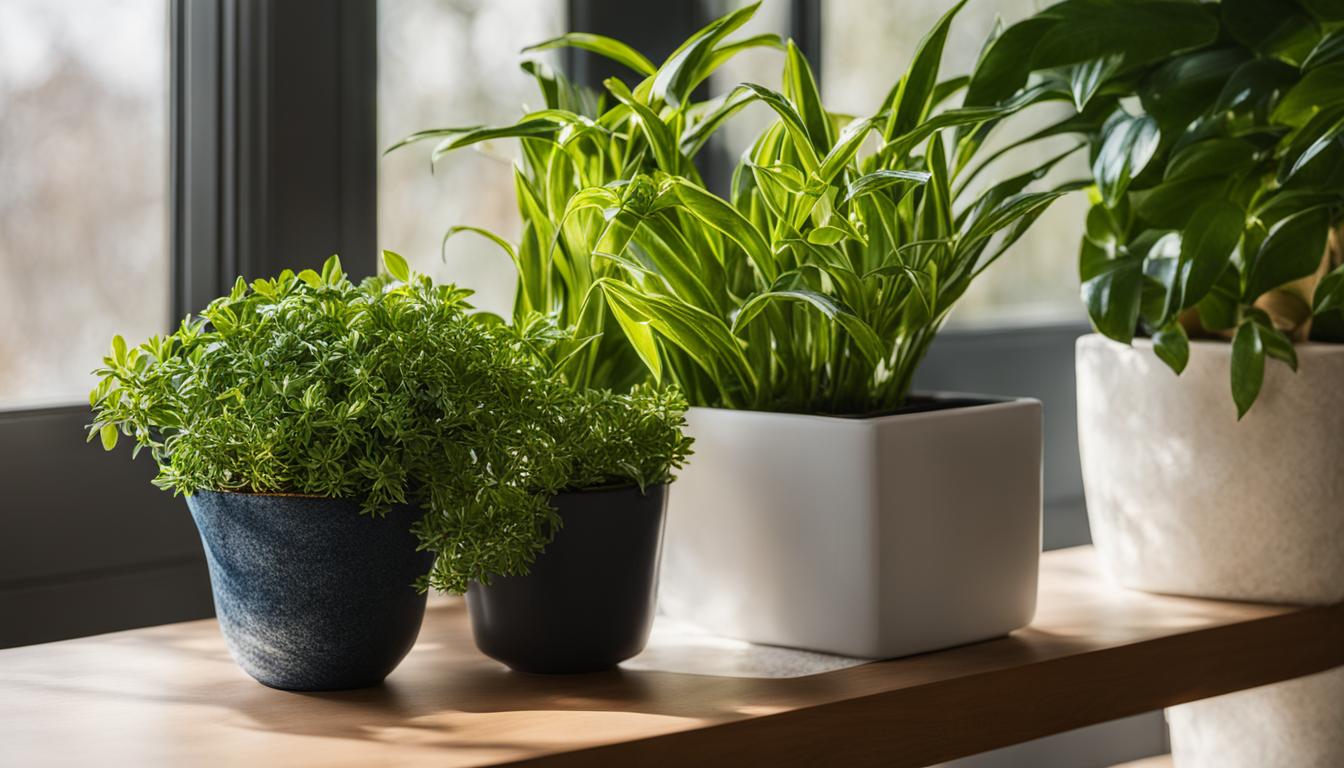
During the winter months, it’s important to adjust your indoor plant care routine to account for the changes in light, temperature, and humidity.
By following the wintertime tips in this article, you can help your indoor plants thrive during the colder months.
Key Takeaways:
- Adjust watering frequency for indoor plants in winter based on lighting conditions.
- Provide adequate lighting for your plants by placing them near windows or using grow lights.
- Manage leaf drop and understand that it is a normal process for indoor plants during winter.
- Protect plants from extreme temperature changes by avoiding cold drafts and hot air vents.
- Suspend fertilizing during the winter months as indoor plants typically experience minimal growth.
Adjust Watering Frequency Based on Lighting Conditions
During the winter months, it’s crucial to adjust your watering frequency for indoor plants to account for the changes in lighting conditions. With fewer hours of daylight, plants receive less light, which means they require less water.
Overwatering can lead to root rot and other issues, so it’s important to be mindful of your plant’s water needs. Here are some tips for watering your indoor plants during the winter:
- Check the moisture level of the soil: To determine when to water your plants, check the moisture level of the soil by poking your finger into it. If the soil is dry at least an inch deep, it’s time to water.
- Use a smaller watering can: Using a smaller watering can allows for more control over the amount of water you provide to your plants. It’s better to underwater than to overwater during the winter months.
- Water deeply but less frequently: Instead of watering your plants frequently, aim to water them deeply. This encourages the roots to grow deeper and promotes healthier plant growth.
Adjusting your watering frequency based on lighting conditions can help prevent overwatering and ensure the health and well-being of your indoor plants during the winter months.
Watering Frequency Guidelines for Indoor Plants in Winter
| Plant Type | Lighting Conditions | Watering Frequency |
|---|---|---|
| Succulents and cacti | Low light | Every 2-4 weeks |
| Tropical foliage plants | Medium light | Every 1-2 weeks |
| Flowering plants | High light | Every 1-2 weeks |
Note: These are general guidelines. It’s important to monitor your individual plants and adjust the watering frequency as needed based on their specific needs. Factors such as pot size, humidity levels, and temperature can also influence how often you should water your indoor plants during winter.
Provide Adequate Lighting for Your Plants
During the winter months, the reduced daylight hours can have a significant impact on the health and growth of indoor plants. To ensure they receive enough light, it is crucial to provide adequate lighting for your plants.
One of the simplest ways to maximize natural light is by placing your plants near windows. This will allow them to capture as much sunlight as possible. However, it’s important to be mindful of any drafts or extreme temperature changes that may occur near windows.
In addition to natural light, you can also consider using supplemental lighting, such as grow lights. These lights provide a spectrum of light that closely mimics sunlight and can help compensate for the lack of daylight during winter.
When using grow lights, make sure to position them at the appropriate distance from your plants to avoid burning the leaves.
Maximizing Natural Light
When positioning your plants near windows, keep in mind that different types of plants have varying light requirements.
Some plants, such as succulents and cacti, thrive in direct sunlight and should be placed near south-facing windows. Other plants, like ferns and tropical foliage, prefer bright but indirect light and can be placed near east or west-facing windows.
It’s also important to rotate your plants regularly. This will ensure that all sides of the plant receive an equal amount of light, preventing them from leaning or growing unevenly.
| Plant Type | Light Requirements | Recommended Window Placement |
|---|---|---|
| Succulents and Cacti | Direct sunlight | South-facing windows |
| Ferns and Tropical Foliage | Bright, indirect light | East or west-facing windows |
| Flowering Plants | Moderate to bright light | South or west-facing windows |
By providing adequate lighting for your indoor plants during the winter, you can help them thrive and maintain their health until the arrival of spring.
Manage Leaf Drop and Adjust to Lower Light Levels
During the winter, indoor plants may experience leaf drop as they adjust to lower light levels. This is a normal process and allows the plant to conserve energy. If your plants stay indoors year-round, some leaf drop is still normal. Avoid worrying about it, and instead focus on providing the best possible care for your plants.
Adjusting your indoor plants to lower light levels during winter can help minimize leaf drop and keep your plants healthy. Here are some tips to help you manage leaf drop and ensure your plants thrive:
1. Gradually acclimate your plants to lower light.
Start by gradually moving your plants to areas with reduced light exposure a few weeks before winter arrives. This will help them adjust more easily to the lower light levels and minimize leaf drop.
Place them in areas with indirect or filtered sunlight to provide them with the best possible light conditions during the winter months.
2. Avoid sudden temperature changes.
Temperature fluctuations can contribute to leaf drop in indoor plants during winter. Keep your plants away from cold drafts and ensure they are not placed near radiators or hot air vents. Maintaining a consistent temperature will help prevent stress and leaf drop.
3. Provide supplementary lighting.
If your plants are not receiving enough natural light, consider using supplementary lighting to compensate for the reduced light levels during winter.
LED grow lights are an excellent option as they provide the specific spectrum of light that plants need for photosynthesis. Position the lights above the plants at the appropriate distance to ensure they receive adequate light.
Remember that leaf drop is a natural response to lower light levels and should not be a cause for concern. By following these tips and providing proper care, you can help your indoor plants adjust to winter conditions and keep them healthy and thriving.
| Common Causes of Leaf Drop | How to Manage Leaf Drop |
|---|---|
| Lack of light | Ensure your plants receive adequate light, either by placing them near windows or providing supplementary lighting. |
| Overwatering | Adjust your watering frequency to prevent overwatering. Check the moisture level of the soil before watering. |
| Temperature fluctuations | Avoid placing your plants near cold drafts or heat sources that can cause sudden temperature changes. |
| Dry air | Increase humidity levels by clustering plants together or using a room humidifier. |
| Nutrient deficiencies | Ensure your plants are receiving the necessary nutrients by fertilizing them according to their specific needs. |
Understanding the causes of leaf drop and taking appropriate measures can help you manage this natural occurrence and provide a healthy environment for your indoor plants.
Protect Plants from Extreme Temperature Changes
During the winter months, indoor plants are susceptible to damage from extreme temperature changes. It’s important to provide a stable environment and protect your plants from cold drafts and sudden temperature fluctuations. Here are some tips to help you keep your houseplants safe and healthy during the winter:
- Avoid placing your plants near windows or doors that may let in cold drafts. Cold air can damage the leaves and roots of your plants.
- Keep your plants away from radiators, heaters, and hot air vents. Sudden changes in temperature can stress or even kill your plants.
- If you live in a particularly cold climate, consider using insulation or draft stoppers around windows and doors to minimize cold air infiltration.
- Use curtains or blinds to provide some insulation and create a barrier between your plants and cold windows.
- Monitor the temperature in the room where your plants are located and ensure it stays within the optimal range for their specific requirements.
- If you notice signs of temperature stress in your plants, such as wilting, yellowing leaves, or a lack of new growth, take immediate action to address the issue.
By taking these precautions and providing a stable temperature environment for your indoor plants, you can help them thrive throughout the winter season.
Protecting Houseplants from Cold Drafts
Cold drafts can be especially damaging to indoor plants during the winter months. They can cause rapid temperature fluctuations and create an inhospitable environment for your plants. Here are some additional steps you can take to protect your houseplants from cold drafts:
- Check for any gaps or cracks around windows and doors that may be allowing cold air to enter your home. Seal these drafts using weatherstripping or caulking.
- Move your plants away from windows or doors that tend to have cold drafts. Find a more sheltered spot in your home where they can receive adequate light without being exposed to cold air currents.
- Consider using plant covers or cloths to create a barrier between cold drafts and your plants. These covers can help retain heat and protect your plants from sudden drops in temperature.
- If you have large houseplants that are difficult to move, place a screen or room divider near windows or doors to help block drafts.
- Regularly monitor the temperature near your plants using a thermometer. This will help you identify any areas in your home that may be prone to cold drafts.
By implementing these measures and being proactive in protecting your houseplants from cold drafts, you can ensure they stay healthy and thriving throughout the winter season.
Preventing Damage from Temperature Fluctuations
Temperature fluctuations can have a detrimental impact on indoor plants, often leading to stress, leaf damage, and even plant death. Here are some additional tips to help prevent damage from temperature fluctuations:
- Use insulated planters or plant pots to provide an added layer of protection against temperature extremes.
- Avoid placing your plants in areas that experience significant temperature fluctuations, such as near heating or cooling vents.
- Consider using a space heater or a heating mat specifically designed for plants to maintain a consistent temperature in the room where your plants are located.
- Monitor the indoor humidity levels, as low humidity can exacerbate the negative effects of temperature fluctuations. Using a humidifier or placing a tray of water near your plants can help maintain appropriate humidity levels.
- If you live in a region with harsh winters, consider creating a microclimate for your plants by grouping them together and using plant trays filled with water to help regulate temperature and humidity.
By following these guidelines and taking proactive measures to prevent damage from temperature fluctuations, you can ensure that your indoor plants thrive throughout the winter season.
| Protecting Houseplants from Cold Drafts Checklist |
|---|
| Check for gaps or cracks around windows and doors |
| Move plants away from windows or doors with cold drafts |
| Use plant covers or cloths to create a barrier |
| Place a screen or room divider near windows or doors |
| Monitor temperature near plants with a thermometer |
Suspend Fertilizing During the Winter Months
During the winter months, indoor plants experience minimal growth and enter a period of dormancy. As a result, their nutritional needs decrease, and it is best to suspend fertilizing during this time.
Fertilizers provide essential nutrients that promote growth, but in winter when plants are not actively growing, excess nutrients can build up in the soil and cause harm. To ensure the health and well-being of your indoor plants, it is important to adjust their nutrition during the winter months.
When to stop fertilizing houseplants in winter depends on the specific plant and its growth patterns. In general, it is recommended to stop fertilizing in the fall as daylight hours shorten and temperatures begin to drop.
This allows the plants to naturally transition into their dormant state without being stimulated by excess nutrients. As a rule of thumb, suspend fertilizing approximately 4-6 weeks before the onset of winter.
Adjusting plant nutrition for winter involves providing a balanced and consistent environment for your indoor plants. Focus on maintaining appropriate temperature and humidity levels, providing adequate lighting, and adjusting watering frequency as needed.
These factors, along with the natural nutrients present in the soil, will support your plants’ overall health and help them thrive during the winter months.
| Season | Fertilizing Frequency |
|---|---|
| Spring | Every 2 weeks |
| Summer | Every 4 weeks |
| Fall | Every 6 weeks |
| Winter | Suspend fertilizing |
Indoor Plant Fertilizer Recommendations for Winter
- Choose a balanced, slow-release fertilizer specifically formulated for indoor plants.
- Consider using organic fertilizers, such as compost or worm castings, which provide a gentle and natural source of nutrients.
- Avoid using high-nitrogen fertilizers during the winter months, as they can stimulate excessive foliage growth that may be difficult for the plant to sustain in lower light conditions.
- Monitor your indoor plants closely to assess their nutritional needs. If you notice signs of nutrient deficiencies, such as yellowing leaves or stunted growth, consult a plant expert for guidance on appropriate fertilization.
By suspending fertilizing during the winter months and adjusting plant nutrition, you can ensure that your indoor plants receive the care they need to thrive during this period of reduced growth. Remember to resume fertilizing in the spring when plants begin to actively grow again.
Prevent Pest Infestations
During the winter months, indoor plants are particularly vulnerable to pest infestations. Common winter pests for indoor plants include aphids, scale, and spider mites. These pests thrive in the warm and dry environment of our homes, making it essential to take preventive measures to protect your plants.
Inspect and Monitor
The first step in preventing pest infestations is to regularly inspect your indoor plants for any signs of pests. Check the undersides of leaves and along the stems, as pests often hide in these areas.
Look for small insects, webs, or sticky residues, which are indications of an infestation. By catching pests early, you can prevent them from spreading and causing significant damage.
Wipe off or Use Natural Remedies
If you spot any pests on your indoor plants, promptly wipe them off using a soft cloth or sponge. For larger infestations, you can use insecticidal soap or neem oil.
These natural remedies are effective against a range of pests and are safe for your plants when used according to the instructions. Remember to apply any treatment in a well-ventilated area to avoid inhaling fumes.
Maintain a Clean Environment
Keeping your indoor environment clean can also help prevent pests. Remove any fallen leaves or debris from the plant’s immediate surroundings, as these can attract pests.
Regularly dust your plants to remove any buildup that may harbor pests or impede photosynthesis. This will also help your plants maximize the limited winter sunlight they receive.
| Pest | Description | Prevention |
|---|---|---|
| Aphids | Small, soft-bodied insects that suck sap from plants | Regularly inspect plants and remove any aphids manually. Consider introducing natural predators like ladybugs. |
| Scale | Tiny, immobile insects that attach themselves to stems and leaves | Wipe scales off using a cloth soaked in rubbing alcohol. Repeat the process regularly to prevent recurrence. |
| Spider Mites | Very small pests that spin webs on plants and cause yellowing and wilting | Boost humidity levels around plants to deter spider mites. Regularly mist plants or use a humidifier. |
By following these preventive measures, you can keep your indoor plants healthy and pest-free throughout the winter months.
Increasing Humidity Levels for Your Plants
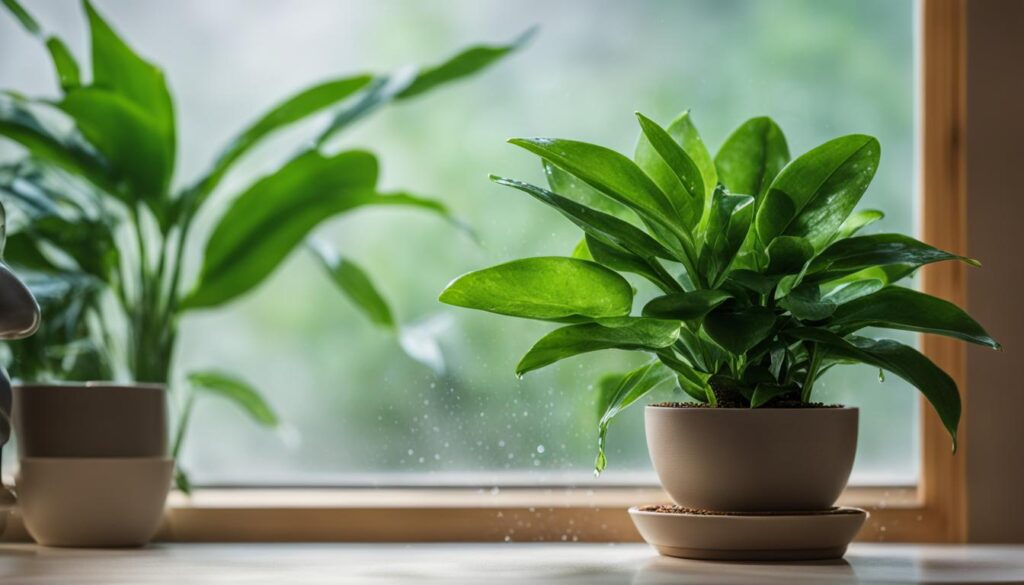
During the winter months, indoor air tends to be drier, which can negatively impact the health of your houseplants. Fortunately, there are several methods you can employ to increase humidity levels and provide the necessary moisture for your plants to thrive.
One effective way to increase humidity for your indoor plants is to cluster them together. By grouping your plants, they create a microclimate that traps moisture and increases humidity levels in their immediate vicinity. This technique is particularly beneficial for plants that require high humidity, such as ferns and tropical plants.
Another method is to place your plants on trays filled with water and pebbles. As the water evaporates, it adds moisture to the air surrounding the plants.
Be sure to choose trays that are large enough to accommodate the size of your plants and fill them with enough water to cover the bottom of the tray without submerging the plant’s roots.
Comparison of Methods to Increase Humidity Levels
| Method | Description | Effectiveness |
|---|---|---|
| Clustering plants together | Grouping plants in close proximity to create a microclimate | High |
| Using trays with water and pebbles | Placing plants on trays filled with water and pebbles to increase evaporation | Moderate |
| Using a room humidifier | Adding moisture to the air with a dedicated humidifying device | High |
Additionally, using a room humidifier can significantly increase humidity levels throughout your home. These devices release water vapor into the air, providing a consistent source of moisture for your plants. Be sure to follow the manufacturer’s instructions for optimal usage and maintenance of the humidifier.
By implementing these tips for increasing humidity levels, you can ensure that your indoor plants receive the moisture they need to remain healthy and vibrant throughout the winter months.
Maintain Clean and Dust-Free Foliage
In winter, it’s essential to keep your indoor plant leaves clean and free from dust. Dust and grime can accumulate on the foliage, hindering their ability to absorb light and photosynthesize effectively. To maintain healthy and thriving plants during the winter months, regular cleaning is necessary.
Start by gently wiping the leaves with a soft, damp cloth. This will help remove any dust or dirt that has settled on the surface. Be careful not to rub too hard, as delicate leaves can be easily damaged.
For plants with larger or harder-to-reach leaves, you can rinse them under a gentle stream of lukewarm water in the shower. Allow the leaves to air dry before returning the plant to its usual spot.
By cleaning your indoor plant leaves, you not only improve their aesthetic appearance but also ensure that they can absorb as much light as possible. A clean and dust-free foliage maximizes the limited winter sunlight your plants receive, promoting their overall health and growth.
Now that you know some wintertime tips for indoor plant care, you can ensure your plants stay healthy and happy throughout the winter season.
FAQ
What are some wintertime tips for indoor plant care?
Follow these tips to care for your indoor plants during winter:
How should I adjust watering frequency based on lighting conditions?
In winter, indoor plants receive less light, so they require less water. Check the moisture level of the soil and water when the top inch is dry.
How can I provide adequate lighting for my plants?
Place your indoor plants near windows to capture natural light or use grow lights as a supplement. Also, remember to rotate your plants regularly for even lighting.
What should I do about leaf drop and adjusting to lower light levels?
Leaf drop is normal during winter as plants adjust to lower light levels. Don’t worry about it and focus on providing proper care to your plants.
How can I protect my plants from extreme temperature changes?
Keep your plants away from cold drafts, radiators, and hot air vents to avoid sudden temperature fluctuations that can stress or damage them.
When should I suspend fertilizing during the winter months?
Indoor plants typically experience minimal growth during winter, so it’s best to stop fertilizing in the fall and resume in spring when they start actively growing again.
How can I prevent pest infestations during winter?
Regularly inspect your plants for signs of pests, such as aphids, scale, and spider mites. Wipe off any pests you find or use insecticidal soap and neem oil for larger infestations.
How can I increase humidity levels for my plants?
Cluster plants together, place them on trays filled with water and pebbles, or use a room humidifier to increase humidity levels. Avoid misting as it is not an effective method.
How do I maintain clean and dust-free foliage during winter?
Regularly clean the leaves using a soft, damp cloth or rinse them gently in the shower to remove dust and grime and maximize the limited winter sunlight they receive.

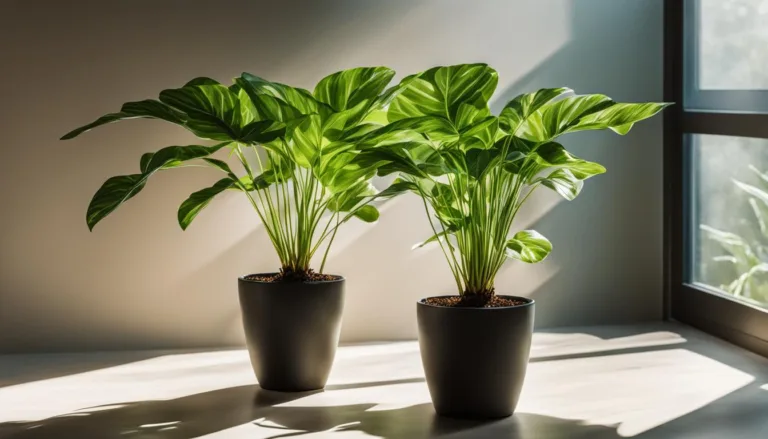
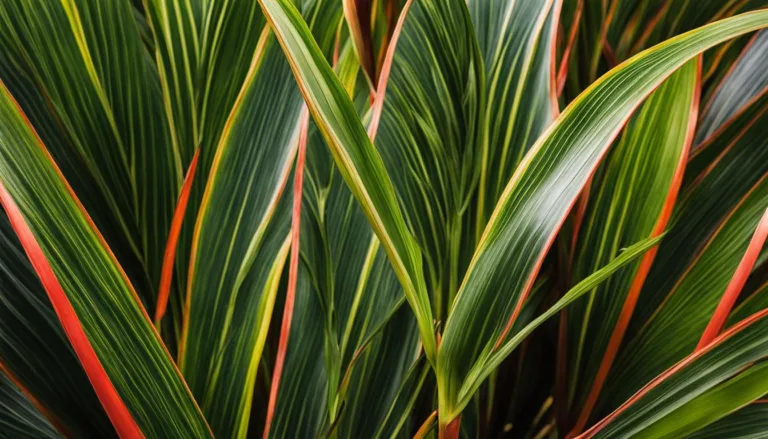
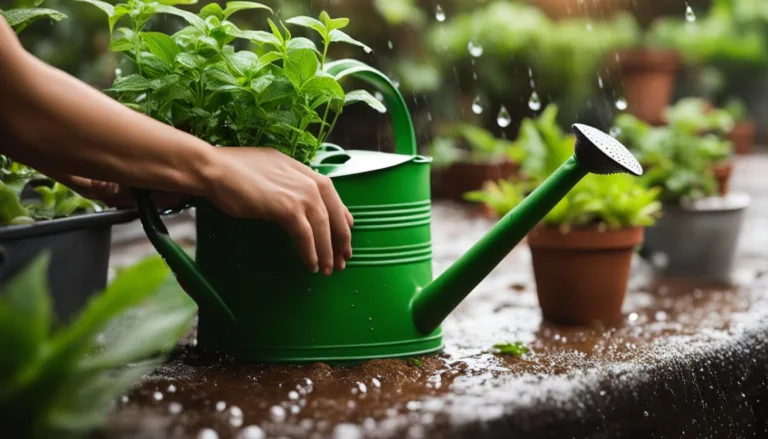
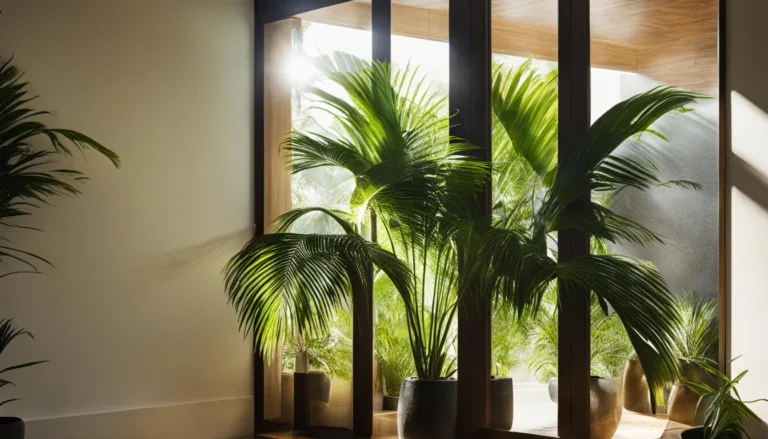

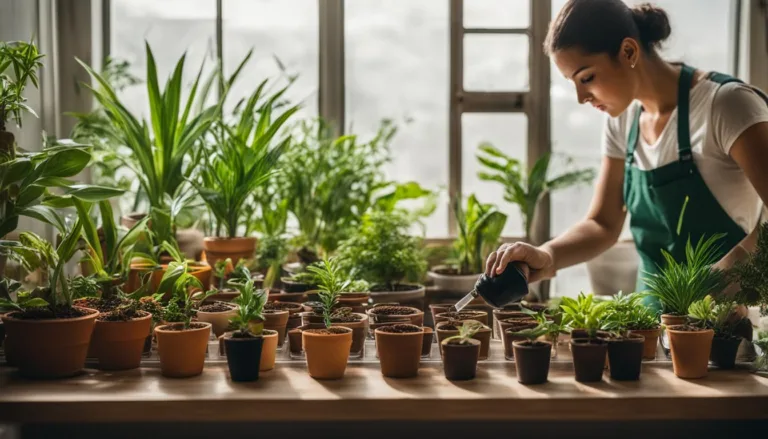
One Comment
Comments are closed.